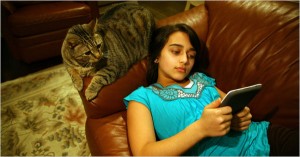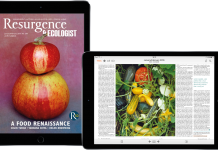 Pew Research has released an interesting breakdown of gadget use by age and device type, which includes ebook reading devices. The graph is very effective in showing how the ages view their “toys”–in fact, I suspect a lot of data can be inferred regarding what ages consider what devices as “toys” and what is considered more useful/practical. It’s no surprise that cellphones, arguably the most practical of gadgets, top usage by all ages, and (unfortunately) ebook reading devices bottom out the usage by all ages, even below game devices in the oldest segments. It does peg younger boomers (47-56) as the largest demo of ebook device users… though, since other devices like computers and cellphones can also read ebooks, that data might not say much about ebook reading habits themselves.
Pew Research has released an interesting breakdown of gadget use by age and device type, which includes ebook reading devices. The graph is very effective in showing how the ages view their “toys”–in fact, I suspect a lot of data can be inferred regarding what ages consider what devices as “toys” and what is considered more useful/practical. It’s no surprise that cellphones, arguably the most practical of gadgets, top usage by all ages, and (unfortunately) ebook reading devices bottom out the usage by all ages, even below game devices in the oldest segments. It does peg younger boomers (47-56) as the largest demo of ebook device users… though, since other devices like computers and cellphones can also read ebooks, that data might not say much about ebook reading habits themselves.
There’s an interesting dip between ebook device use: 7% of younger boomers, 3% of older boomers (57-65), and 6% of the Silent Generation (66-74), a higher percentage than the Gen X and Millennials. A possible reason may come from the option of font size and selection, and the ease of buying online, that might attract the more sedate 66-74 crowd, while the older boomers are still comfortable enough with traditional book habits not to need these benefits (or uncomfortable enough with technology to not want to pursue them). It’s possible the numbers are lower with the younger ages because many of them are using other devices, such as laptops, iPads, cellphones, etc, to read ebooks, and are therefore passing on dedicated reading devices.
But the Pew research, which took place in late 2010 but before Christmas, might have missed an important segment: The under-18 kids who received ebook reading devices over the holidays. A New York Times article discusses this segment, pointing out the rise of social groups that read on their devices in groups, sharing content and recommendations between them. And parents, recognizing the value of a device that gets their kids to read–in some stated cases, in lieu of regular TV watching–are all for it.
There’s no mention in the NYT article whether those parents are looking forward to textbooks on those devices, and the possibility of lightening students’ textbook load. But it does mention that teachers in schools are allowing students to read from their devices during reading periods and breaks, so the devices are becoming more common in school settings.
It would be interesting to see the numbers in the Pew research include the 10-18 crowd, to see if there might be an interesting twist to the numbers at the lower age register.

































At 48, I guess I’m in the ‘younger boomer’ category and my 19-year-old daughter is in the Millenials. We are both bookworms and love our Kindles.
My husband rarely reads, my 24-year-old son hasn’t read since he graduated from high school, and my 18-year-old son likes to read but is happy with physical books right now.
My parents, the oldest boomer generation, don’t buy books. They have always been very frugal and are exclusively library users. I have considered getting them a Nook or Sony, but will probably get them Kindles so that they can enjoy free and indie books.
I suspect the younger generation just doesn’t read much. I would say that most of my kids’ friends don’t read outside of school. It’s the reality TV generation. They listen to music, watch movies and play game consoles for their entertainment.
I would propose that the jump in percentage in the 65-74 range is because the majority is retired or working part-time.
My nine year old nephew has my old Sony 505 and has for almost a year. He absolutely loves it. I occasionally buy him books for it and our local library has a pretty good selection of kids ebooks for it too.
Interesting take on the attraction of ebook readers to a younger demographic. Before we rush off and put the text books on these devices, analyze the research on the reading retention scores between physical books and ebooks. I believe it will be 10’s of percentage points difference.
The point of school is to retain some of what is being taught.
And is there research data on retention rates between printed and digital data for 18-year olds and younger? Let us know if you have a link to share.
I am almost 79 and I consider the font enlargement feature of my Kindle to be #1 and the search feature to be #2. #3 is the ability when traveling to have lots of books on my device to satisfy any reading whim at any time.
My biggest disappointment is the difficulty in reading PDF files, particularly ones that are in columns or embedded boxes, which just branch off somewhere and then pick up where they left off at seemingly random places.
It’s clear from the discussion above that there are a lot of individual traits about reading devices that appeal to people differently. This surely impacts the demographics as different ages tend to want different things, or see certain pros and cons differently than others.
But the differences between devices may also be hurting their overall adoption: I waited out the dedicated device revolution, with none of the devices even remotely satisfying me, until the Nook Color came along and gave me everything I wanted. There may be a number of people out there who are interested in reading devices, but simply can’t decide which one they want. It may just happen that the older boomers haven’t yet seen a device that satisfies most of them.